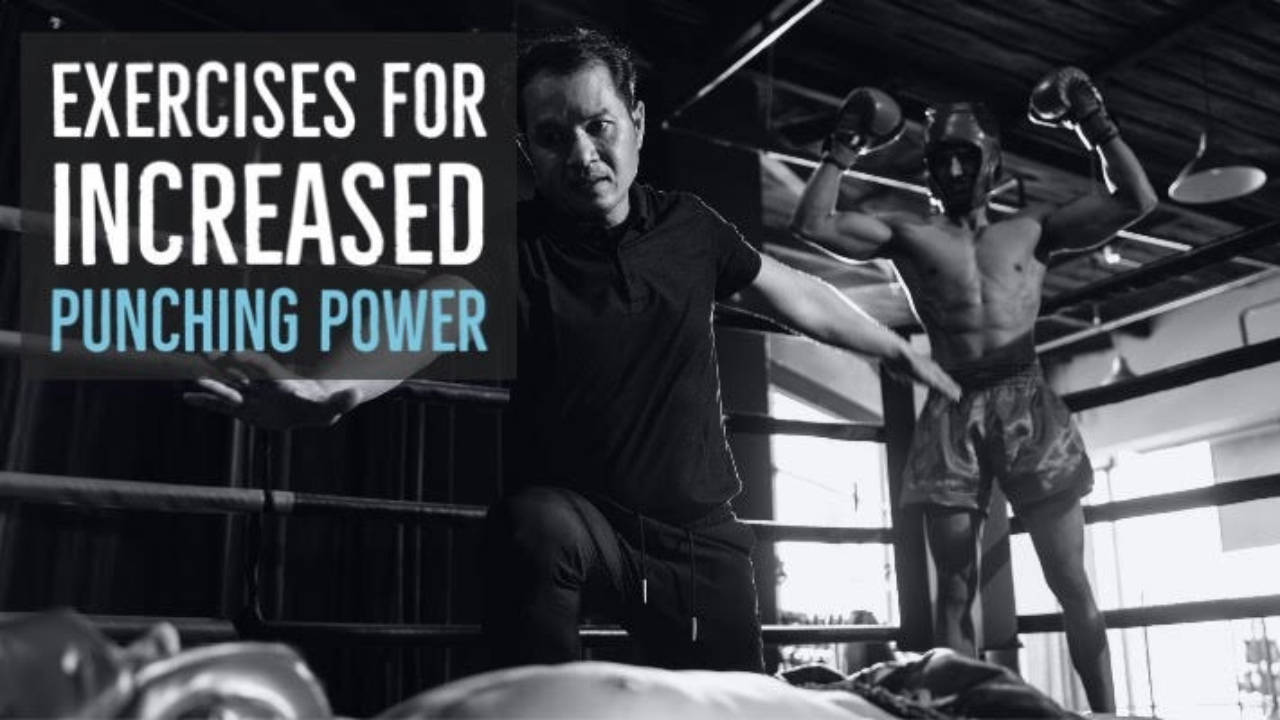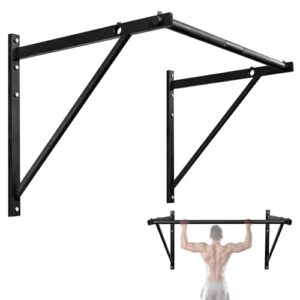Strength training is essential for boxing to enhance power, endurance, and agility. It optimizes a boxer’s performance and reduces injury risks.
Engaging in a solid strength training regimen is crucial for boxers aiming to step up their game. By focusing on core stability, explosive power, and muscular endurance, athletes can deliver more potent punches and move strategically around the ring. A boxer’s strength program typically integrates dynamic exercises that mimic fight movements, conditioning the body for the intense demands of the sport.
Tailoring workouts to address the unique physical challenges faced in boxing ensures that fighters are battle-ready, balancing their routines between weightlifting, plyometrics, and bodyweight exercises. This approach to fitness not only prepares boxers for the ring but also fortifies their overall health and athletic longevity.
:max_bytes(150000):strip_icc()/2023-Q1-Power-Up-Punches-Recirc-ba58fde19361479aaf11a52e38c79e20.jpg)
Credit: www.shape.com
Packing A Punch: The Role Of Strength In Boxing
For boxers, the power behind each punch relies heavily on their strength. It’s not just about how hard they can hit, but how effectively they can deliver their strength to the target. This focus on strength plays a crucial role in boxing, transforming skilled fighters into formidable opponents. Let’s delve into the significance of strength in boxing and understand how it amplifies the impact of every blow.
The Anatomy Of A Boxer’s Punch
A boxer’s punch is more than just arm strength. It’s a symphony of muscles working together. From the twist of the hips to the push from the legs, every part of the body comes into play. Let’s break it down:
- Legs and Hips: The punch starts here, providing a solid base and explosive power.
- Core: It stabilizes your torso and transfers force from the lower to the upper body.
- Chest and Shoulders: These muscles engage to extend the arm and drive the punch forward.
- Arms and Wrists: They deliver the final snap, focusing the power into a tight impact point.
Strength Vs. Speed: Striking The Balance
Mastering the balance between strength and speed ensures a boxer’s success. Too much emphasis on strength can slow a fighter down, while too much speed might reduce the punch’s power. Finding the middle ground is key. Here’s what matters:
| Strength | Speed |
|---|---|
| Increase knockout potential | Improve reaction time |
| Enhances ability to clinch | Allows rapid fire combinations |
| Builds endurance to resist fatigue | Ensures swift footwork and dodging |
To develop optimum punching power, boxers integrate both heavy lifting and speed drills into their training regimen. Pairing heavy bag work with plyometrics, for example, enhances explosive strength while maintaining quickness. Consistency in this blended approach is what creates punches that are both swift and devastating.
Getting Started With Strength Training
Boxers need power, stamina, and agility. Strength training builds these. It’s not just lifting weights. It’s about crafting a routine that propels boxing skills forward. Let’s dive into setting up a strength training program that syncs with boxing.
Assessing Your Current Fitness Level
Before starting, know where you stand. A fitness assessment tailors your training plan. It helps set realistic goals. See how fit you are now with:
- Endurance tests like the Cooper test
- Strength tests using bodyweight exercises
- Flexibility measures with simple stretches
Crafting A Strength Training Routine For Boxing
A boxer’s strength routine must focus on core, legs, and upper body. Here’s a simple plan:
| Day | Focus Area | Exercises |
|---|---|---|
| Monday | Upper Body |
|
| Wednesday | Legs & Core |
|
| Friday | Full Body |
|
Include rest days. Rest is vital for recovery. Adjust this routine to your fitness level and boxing needs.
Core Exercises For Explosive Boxing Power
Core exercises play a vital role in building explosive power for boxers. A sharp jab or a devastating uppercut both depend on the power generated from the core. To enhance punching force and stamina in the ring, boxers must focus on strengthening this pivotal area.
Building A Strong Foundation: Core Workouts
A boxer’s foundation lies in a strong core. Core workouts not only improve balance but also bridge the power from lower to upper body. Incorporating the following exercises ensures a robust core foundation:
- Planks – enhance endurance and core stability.
- Crunches – target the abdominal muscles effectively.
- Russian Twists – engage the obliques for rotational strength.
| Exercise | Sets | Reps |
|---|---|---|
| Planks | 3 | 1 min hold |
| Crunches | 3 | 12-15 |
| Russian Twists | 3 | 15 each side |
Rotation And Stability: Enhancing Punching Power
Rhythmic rotation and core stability directly contribute to a boxer’s punching power. The core muscles are essential in all punch executions. Focus on exercises like:
- Medicine Ball Slams – explosive movements building core power.
- Cable Woodchoppers – mimic punching motion for rotational strength.
- Swiss Ball Rollouts – build stability and control.
Upper Body Workouts To Maximize Punch Force
Boxers know that powerful punches come from a strong upper body. Strategic upper body workouts can massively enhance punching power. This segment focuses on exercises designed to maximize punch force with targeted upper body training.
Shoulder Strength: Key Exercises For Boxers
Shoulders fuel punch velocity and endurance. Building shoulder strength is crucial.
- Shoulder Press: Use dumbbells or a barbell to press overhead. This strengthens the deltoids.
- Lateral Raises: These target the middle shoulder muscles, aiding in punch delivery.
- Front Raises: Front raises focus on the anterior deltoids, important for jab strength.
- Shrugs: High-rep shrugs develop the trapezius muscles, complementing the overall shoulder girdle.
Arm And Chest Workouts For A Heavier Hit
Arm and chest muscles generate force behind punches. They help deliver a heavier hit.
| Exercise | Muscle Targeted | Benefit |
|---|---|---|
| Push-Ups | Chest and Triceps | Increases overall upper body mass and power. |
| Bench Press | Chest | Improves straight punch force. |
| Arm Curls | Biceps | Cultivates firmer, quicker hooks. |
| Tricep Dips | Triceps | Enhances punching speed and snap. |
Include these exercises in regular training for a stronger, more formidable presence in the ring.
Lower Body Drills For Improved Movement And Power
Lower Body Drills for Improved Movement and Power play a critical role in boxing. A boxer’s legs generate the foundation for swift, dynamic movement. They also supply the necessary torque for devastating punches. Tailoring a workout plan to strengthen the lower body is vital. It ensures a boxer remains grounded while capable of explosive movements.
Leg Strength: The Source Of Knockout Power
Leg strength is not just about muscle mass; it’s about functional power. This power translates directly into punch force. Effective leg workouts include:
- Squats: From air squats to loaded squats, they build stability and power.
- Deadlifts: These target multiple muscle groups for overall leg strength.
- Lunges: Enhance balance and unilateral muscular development.
These exercises should be integrated twice a week into training routines. They ensure legs are not just strong, but capable of delivering knockout blows.
Footwork And Agility Training Techniques
Agile footwork allows a boxer to move in and out of range effectively. Incorporating agility drills is crucial. Some top footwork exercises include:
- Ladder Drills: Improve speed and coordination.
- Cone Drills: Boost lateral movement and agility.
- Shadow Boxing with Emphasis on Footwork: Puts techniques into practice.
Footwork drills should become a daily fixture. They complement strength training for an all-encompassing approach.

Credit: silverlandia.com
Integrating Conditioning With Strength Training
Integrating conditioning with strength training ensures boxers can hit hard and last long in the ring. Conditioning builds stamina while strength training develops power. Both are vital for boxers. The key is to find the right blend. Let’s delve into how to balance muscular endurance with power. Then, we’ll craft a weekly training plan for peak performance.
Balancing Muscular Endurance With Power
To thrive in boxing, you need both muscular endurance and explosive power. Strength training boosts power. Conditioning enhances endurance. Seek a balance between the two for optimal in-ring performance.
Your muscles must withstand repeated contractions during long bouts. At the same time, they should deliver powerful punches quickly. To achieve this balance, combine:
- High-rep, low-weight exercises to build endurance.
- Low-rep, high-weight exercises for power.
Include exercises like:
| Exercise | Reps | Sets | Type |
|---|---|---|---|
| Push-ups | 15-20 | 3-4 | Endurance |
| Deadlifts | 4-6 | 3-4 | Power |
Split your training days to focus on different aspects. Maybe strength on Monday and endurance on Thursday. Keep muscles rested and ready to adapt and grow.
Creating A Weekly Training Plan For Optimal Performance
A well-structured weekly plan can make all the difference. Aim to integrate strength and conditioning workouts effectively. Alternate workouts to prevent burnout and encourage recovery.
Here’s an example of a balanced weekly training plan:
- Monday: Power – Focus on heavy lifting with ample rest.
- Wednesday: Conditioning – Moderate weights, higher reps.
- Friday: Mixed – Blend both endurance and power exercises.
Consider activities like jump rope or sprints on Tuesdays and Thursdays for active recovery. These enhance footwork and stamina without overtaxing muscles. Sunday is reserved for rest or light stretching activities. Proper rest is essential for muscle repair and growth.

Credit: www.getphysical.com
Frequently Asked Questions Of Strength Training For Boxing
What Strength Training Do Boxers Do?
Boxers engage in various strength training exercises including weightlifting, plyometrics, bodyweight exercises, and medicine ball workouts. These routines enhance power, endurance, and overall physical conditioning.
How Many Times A Week Should A Boxer Do Strength Training?
Boxers should engage in strength training 2-3 times per week to balance conditioning and technical skills.
How Can I Improve My Boxing Strength?
Incorporate weight training to build muscle. Focus on compound movements like squats and deadlifts. Practice punching with added resistance. Ensure a balanced diet for muscle recovery. Train consistently and increase intensity gradually.
Do Boxers Train For Hypertrophy Or Strength?
Boxers train for both hypertrophy and strength to enhance their power, endurance, and muscle mass. They balance their workouts to optimize performance in the ring.
What Are Key Strength Exercises For Boxers?
Boxing requires robust core stability, so exercises like planks, Russian twists, and medicine ball throws are essential.
How Does Strength Training Benefit Boxers?
Strength training enhances punching power, endurance, and overall physical resilience, improving performance in the ring.
Conclusion
Embarking on a strength training journey elevates your boxing performance to new heights. It builds resilience, power, and agility, key traits for any boxer. Prioritize consistency in your workouts and always listen to your body. Remember, the right balance between strength work and skill training creates a formidable fighter.
Lace up, train hard, and step into the ring with confidence.
















